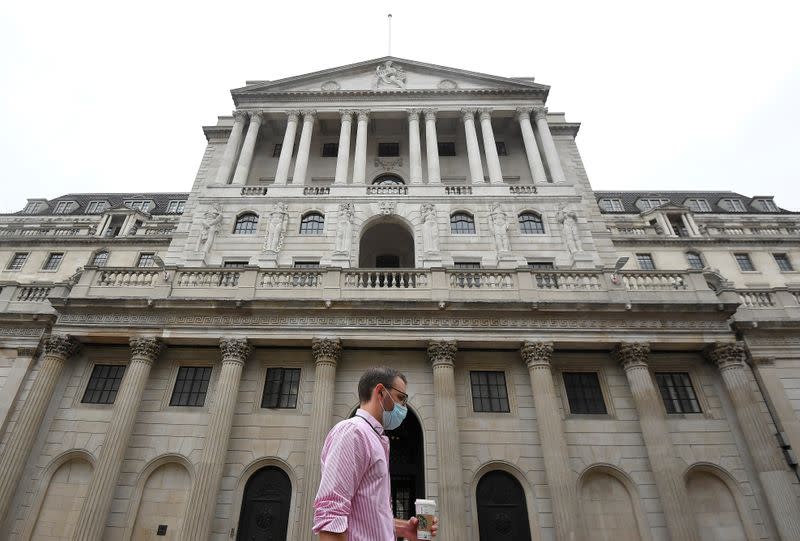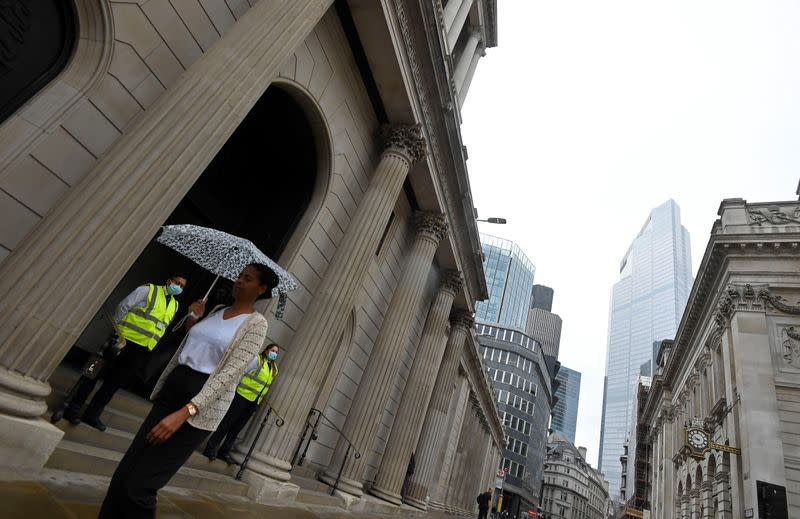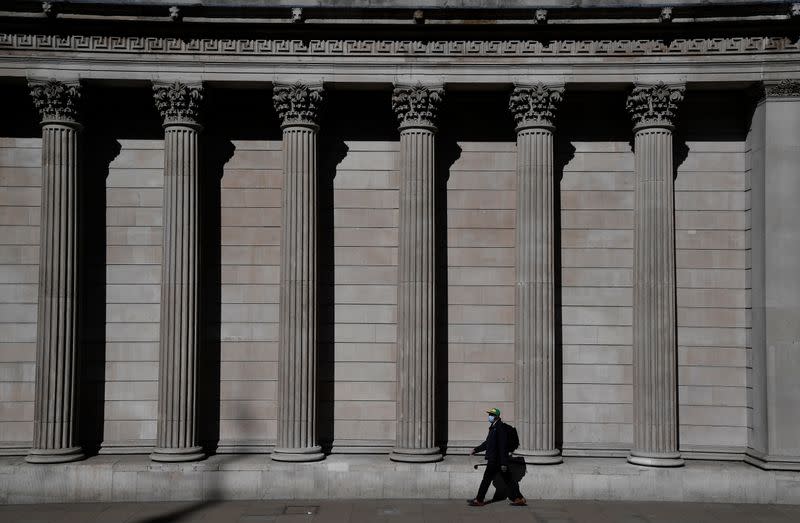Negative rates in BoE toolbox, but no plans to use them, BoE's Bailey says
By Andy Bruce and David Milliken
LONDON (Reuters) - Britain's central bank said it saw no immediate case to cut interest rates below zero on Thursday as it warned the economy would take longer to recover from its COVID slump than it previously forecast.
Unemployment is likely to almost double by the end of this year, the Bank of England said.
"There are some very hard yards, to borrow a rugby phrase, to come," Bank of England Governor Andrew Bailey said. "And frankly, we are ready to act, should that be needed."
On negative rates, already used by the European Central Bank and the Bank of Japan, Bailey said: "They are part of our toolbox ... But at the moment we do not have a plan to use them."
The BoE cut interest rates to just 0.1% in March and expanded its bond-buying plan to almost $1 trillion.
On Thursday, its nine monetary policymakers all voted for no policy changes as they sketched out a slow path to recovery.
The BoE said the economy would not recover its pre-pandemic size until the end of 2021, slightly later than its previous estimate.
But the BoE's shorter-term projections are less grim. While unemployment is expected to peak at 7.5% at the end of 2020, that is lower than its previous estimate of just under 10%.
A 9.5% drop in the overall economy this year would be the worst performance in 99 years but less severe than a 14% plunge in the May scenario.
Sterling hit its highest level against the dollar in five months.
"Overall, the BoE's economic outlook is relatively less dovish than expected and the absence of a strong signal in favour of negative rates opens the door for further pound gains in the near-term," MUFG analysts told clients.
British government bond yields also rose, as the BoE confirmed a further slowdown in the pace of bond purchases.
The BoE said it would buy 4.419 billion pounds of gilts weekly until Dec. 16, down from 6.9 billion pounds now.
"LUKEWARM" ON NEGATIVE RATES
The economy might need more help as it struggles to cope with the novel coronavirus and the end of a Brexit transition period from Jan. 1, potentially with no new European Union trade deal.
"With unemployment set to rise as furlough unwinds and double trouble from Brexit and COVID, we expect a change of course and further easing in the end," Morgan Stanley economists Jacob Nell and Bruna Skarica said.
Most economists polled by Reuters last month said they expected the BoE's next move to help the economy would be to expand its bond-buying again in late 2020.
"The ... discussion on negative rates was lukewarm at best," said ING economist James Smith.
The BoE said banks in countries which have cut rates below zero were often limited in their ability to pass on lower borrowing costs to lenders and feared negative rates would erode their capital.
"As a result, negative policy rates at this time could be less effective as a tool to stimulate the economy," it said.
But analysts at Citi said the BoE's announcement laid the ground for a negative Bank Rate by mid-2021.
The BoE said there were factors that could change its previous view that the floor for rates was just above zero.
SUB-ZERO INFLATION
The BoE's new projections showed inflation was likely to fall below zero this month before returning to the BoE's 2% target over the next couple of years and rising to 2.2% in 2023.
When inflation is forecast to rise above 2%, that is typically a signal the BoE expects to do no more stimulus.
Bailey and his fellow policymakers signalled they would not be in a rush to raise borrowing costs when inflation does rise.
"The Committee does not intend to tighten monetary policy until there is clear evidence that significant progress is being made in eliminating spare capacity and achieving the 2% inflation target sustainably," they said.
(Reporting by UK bureau, Writing by William Schomberg,; Editing by Giles Elgood and Timothy Heritage)





